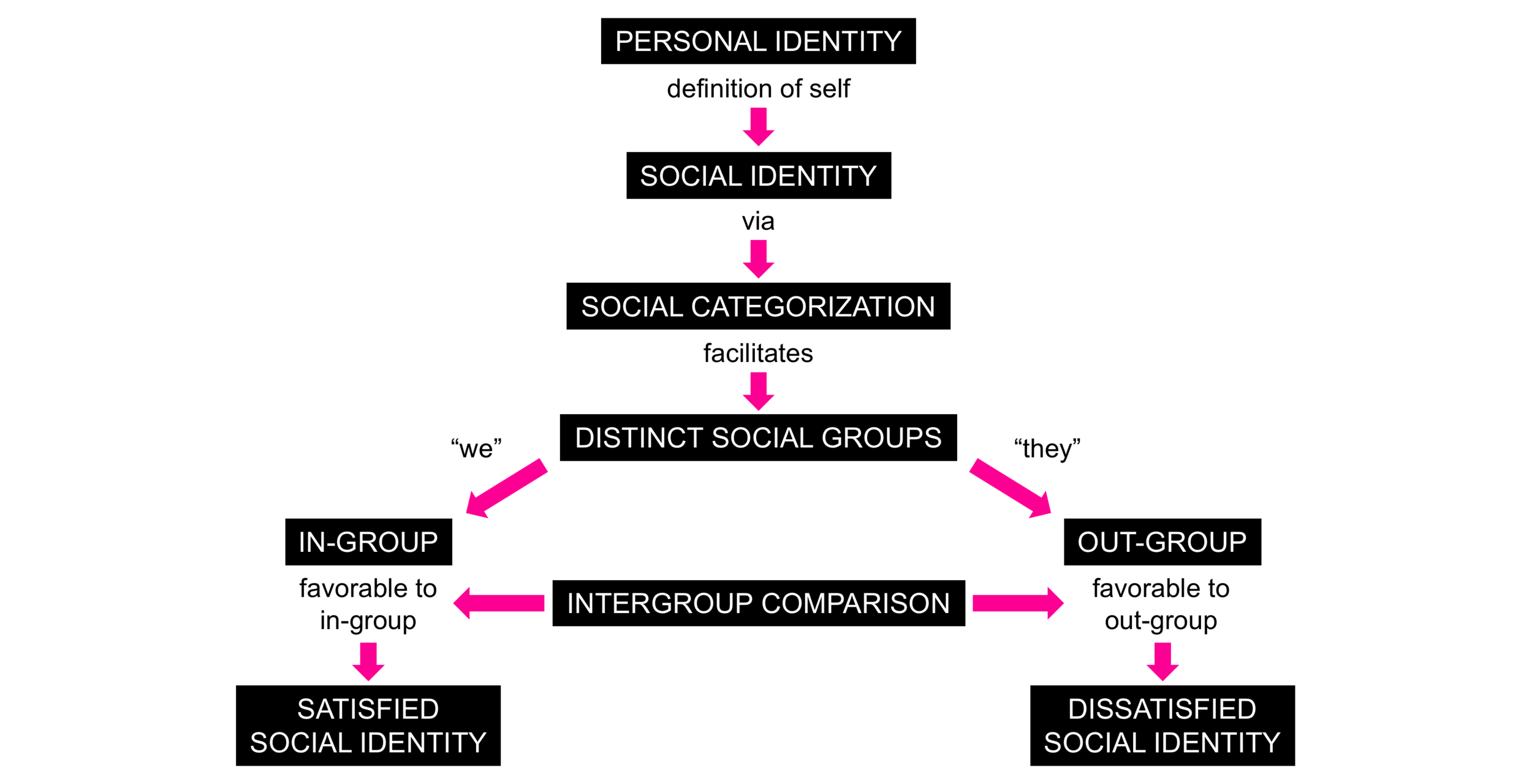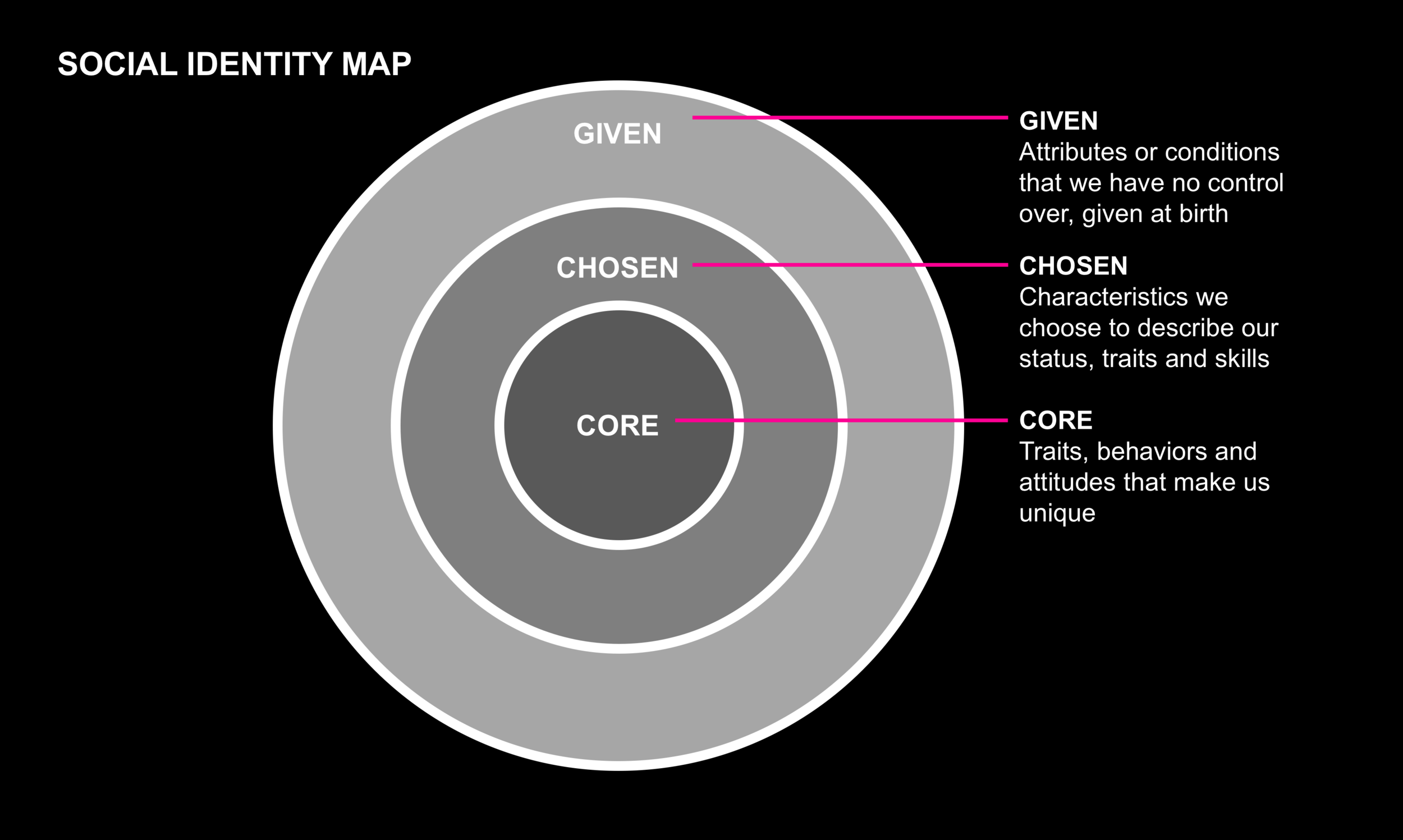Who are we?
It's often an evolving answer. When we consider who we are — or rather, who we believe ourselves to be — many of us cite our backgrounds, beliefs, experiences and interests. But what is our true identity, and what are the building blocks that create the person we identify as throughout our lives?
At Y Studios, we believe that everything we do — from the choices we make to the decisions we avoid — stems from how we see ourselves in the world and how we choose to engage with our environment. Let's peel back the layers of our personalities and discover what factors influence our identities.
WHAT DO WE MEAN WHEN WE SAY IDENTITY?
To determine which factors influence our identity formation, we must first define what an identity is. What do we mean when we say identity? According to the dictionary, identity is:
· The distinguishing character or personality of an individual.
· The relation established by psychological identification.
· The condition of being the same with something described or asserted.
· The sameness of essential or generic character in different instances.
These four definitions highlight different points of view. We may have created an identity within ourselves based on our psychological identification. However, distinguishing traits that inform our identity are equally subjective from others' perspectives. We may identify as confident or trustworthy, while others may label us arrogant, meek or unreliable.
How is our identity cultivated in our minds and the minds of others? Psychologists state that we must first discover our personal potential then choose a purpose for living. After we've identified how to use our potential, we must find opportunities to implement it in ways that fulfill our sense of purpose. As we age, we continue to develop our identity by reevaluating our potential and realigning our sense of purpose.
PERSONAL IDENTITY VS. SOCIAL IDENTITY — WHAT’S THE DIFFERENCE?
As we discuss identity, we must consider two types of identity psychology — personal identity and social identity. Our personal identity, or self-identity, is the answer to one of the most important questions all humans ask about life: Who am I? Personal identity is our concept of how we think of ourselves. This involves factors that we can control — like our decisions or interests — and those we can't — such as our families and race.
Our personal identity is how we perceive ourselves, but our social identity is how others perceive us. People recognize us by our characteristics within our town, school, career or another community context. Society will identify each person from these characteristics, then place the individual in a collective group with others that share those characteristics. Some social identities might be defined by our marital, financial, occupational, religious or behavioral status.
Social Identity Theory by Henry Tajfel, 1979: This framework in social psychology shows how a part of person’s identity comes from a sense of who they are in a group membership
The concept of social identity was created as a means to consider the way one conceptualizes the self-based on the social groups to which one belongs. Formulated by social psychologist Henri Tajfel and John Turner in the 1970s, the social identity theory describes the conditions under which social identity becomes more important than one’s identity as an individual, thereby influencing intergroup behavior.
SOCIAL IDENTITY MAP
An individual’s personality is made up of a Social Identity. It is a sum of parts that define who we are based on our affiliation with social groups that define our identity. A basic Social Identity Map is constructed using a combination of three different levels:
Core: Elemental traits, behaviors and attitudes that make us unique as an individual e.g. behaviors, values, beliefs etc.
Chosen: Characteristics that we can choose to describe our status, traits and skills e.g. occupation, political affiliation, hobbies, place of residence etc.
Given: Attributes or conditions that we have no control over e.g. age, gender, place of birth, physical characteristics etc.
HOW DO WE FORM AN IDENTITY?
What factors influence identity formation? In a sense, every stimulus we experience consciously and subconsciously throughout our lives has an impact on the way we and society create and label our identities. Identity formation and evolution are impacted by a variety of internal and external factors like society, family, loved ones, ethnicity, race, culture, location, opportunities, media, interests, appearance, self-expression and life experiences.
1. Society
Does our identity begin its cultivation from the moment we're born? Surprisingly not. Our identity is influenced long before we are even conceived. The fact is that our society — indiscriminate of the customs or cultures within it — has already begun shaping one's identity through years of categorization and labeling based on traits and expected behaviors. Before we're born, these pre-determined groups are already crafted so we can be sorted.
Many of these broad traits are based on appearances such as gender and skin color. Others include ethnicities, religious, financial and social statuses. Even aging, a natural part of life for all men and women, incurs a pre-determined assumption. These pre-determined thoughts within our society can be helpful or harmful, particularly in instances in which one group is either celebrated or discriminated based on elements of their identity.
Society can act as a positive and negative force on our identity. The concept of collectivism, in which we view ourselves in relation to others within our society, is just as important as individualism. Finding a group that shares aspects of our identity and either helps us accept or change how we identify ourselves helps us throughout our lives.
2. Family and Loved Ones
While all of our relationships with our society are influential, our families and loved ones have a significant impact on our identity formation. As they are the first we are exposed to, we consciously and subconsciously look to our parents, siblings and extended family members for the building blocks of our identity formation. Unsurprisingly, this influence is a two-way street — as we learn and develop our identity, our loved ones' identities evolve because of our impact on their lives.
Throughout our early developmental years, we may embody the title of son, daughter, brother or sister. How strongly we identify with these labels is influenced by variables like the size and type of family we belong to and the level of support or conflict that we receive from our family. In many cases, the level of support or conflict is influenced by factors in our parents' lives that contribute to their identities, such as financial status or level of education.
Aside from our familial relationships, our platonic and romantic relationships also change who we are. As our relationships become more serious, the valence and size of our concept of self changes as well. We can gain and lose traits — both positive and negative characteristics — that become hallmarks of our identities. These relationships can also positively and negatively influence important facets or our self-concept, such as causing us to lose interest in things that we enjoy or fall out of touch with our religious or cultural attachments.
3. Ethnicity, Race and Culture
One of the most complex and multifaceted factors that influence identity formation is ethnicity, race and culture. These aspects of our lives are continually evolving, both in the way the members of each group define their group and how society chooses to define these groups. While we have no control over our race and ethnicity, we can decide to immerse or distance ourselves from the cultures, religions and customs that we're born into.
All of these factors influence our identities from the moment we're born, especially when our families identify strongly with these associations. Along with creating a foundation for our system of beliefs, these factors also influence our behaviors and attitudes. Each cultural group may express their emotions, approach problems or conduct their lives in a way that is vastly different from another group.
Many people have a strong sense of pride when it comes to these factors. However, how our environment reacts to features like our skin color, heritage or cultural customs can either strengthen or weaken our sense of pride in that aspect of our identity. The attitudes and behaviors directed at us influence the way we respond, specifically in the way we express or repress this aspect of our identity.
4. Location and Opportunities
Location and opportunities are perhaps two of the most variable influences on our identities. The country we're born in, the town we live in and the community we're part of impact our sense of self. The current government, economy and even the time in which we live impacts how we see ourselves and the world. The geography and cultures of our town influence our productivity, creativity and happiness.
Our contentment with our identity has a lot to do with the opportunities our location affords us. If we feel isolated, out of place or unaccepted in the collective identity, we may come into conflict with our personal identity. Research has found that different variables within our physical surroundings can change the way we perceive our lives. While it might not change our personality, it can reinforce our existing thoughts about our identity.
5. Media
Like society, the media influences how we should — and consequently, how we do — see ourselves. Media has an immediate impact on our perceived reality. Consciously and subconsciously, we receive messages through advertising, television shows, movies, games and music that reinforces or conflicts with our beliefs about life and whether or not we should be content with who we are. These false depictions of reality can harm our self-perception.
The internet provides a wealth of information and communication that we can use as a guide for social comparison and to find others who share our collective identity. However, too much information and exposure can make us question aspects of our identity. Exposure to media in any form is just as influential in shaping our identity as our family, friends and society.
As a social concept, the advances in internet technology help transform our identities in new ways. Social media specifically gives us a platform to showcase our physical identity and create a virtual identity. This virtual identity can embody elements of our true identity and allow us to withhold certain aspects of ourselves that we may not embrace confidently. We also have the choice to create an entirely different identity as a way to further explore ourselves or cope with our real identity.
6. Personal Interests
Our hobbies and personal interests are also essential elements of our identity. When we first get to know someone else, a common conversational thread concerns their interests. Their favorite movies and bands, how they relax or have fun and what activities they like and dislike give us information on which we base our initial opinions. The intangibles, such as their hopes, dreams and favorite memories, can also shed light on how they seem to perceive themselves.
Our careers are also strongly tied to our identities. While our perception of ourselves can enhance or limit our potential as employees, the role that we hold can influence our personal identity. Job insecurity can strain our sense of self, while success in our role can reinforce our identity. However, those who hold several positions in different industries may find that their multiple career identities challenge their sense of singular personal identity.
7. Appearance and Self Expression
How we look and present ourselves to the world says a lot about who we are. It can also impact how others perceive and treat us, which in turn shapes identity formation. Our physical identity is not superficial — it's actually an aspect of ourselves we tie to our sense of identity. Our appearance and way we express ourselves are how we choose to represent this identity visually. We may choose to project our culture, personal interests or status through our appearance.
Allowing our appearance and self-expression to influence a majority of our identity formation is not healthy. Sadly, society projects false realities to skew our perception of what constitutes the ideal appearance. Though it is healthy for us to be comfortable and confident in the way we present ourselves to society, being overly critical of our appearance is unhealthy. If we believe that society's depiction of approved and unapproved likenesses is accurate, those who do not meet the standards may experience discontentment with their sense of self.
8. Life Experiences
Past experiences can also contribute to our identity formation. Developmental trauma experienced in childhood shapes who we are as adults, with earlier instances of distress leading to more profound levels of negatively impacted identity formation. Thankfully, we can work through our "traumatic self" brought on by childhood events to create a healthy adult identity.
Our positive life experiences also shape our identities. Overcoming difficult times through adolescence or adulthood can help us build resiliency in our sense of selves. Even positive emotional support we receive as children can have a positive effect on our relationships decades later. Whether the experience is inherently positive or negative, how we experience it and process those experiences shape the way we perceive ourselves.
WHO ARE WE REALLY?
What is personal identity, and why is identity important? Society is one of the many factors that shape who we are, and in turn, our collective and personal identities shape society. As we grow individually and together, our identities evolve and influence the identities of future generations.
At Y Studios, we are constantly striving to create innovative products that align with who we are and who we desire to be. Our approach to research and design digs deep into our identities and encourages us to discover how we can cater to the individual self while developing innovative solutions that meet the needs of our collective identities. To learn more about our design approach and insights that inspire us, connect with our team today!
See other PERSPECTIVE Reports

























